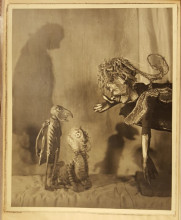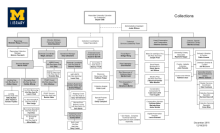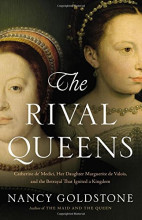Maria Anne Buczkowski
Library Blogs
Showing 1291 - 1300 of 1968 items

People of the Library is an ongoing series brought to you by a group of students called the Michigan Library Engagement Collaborative. They will interview library staff as well as the students, faculty and community members who use our Library. Our first interview is with Alexandra Stark.

We got a donation earlier this month with a number of older game gems, including Frogger the Board Game. The inside bears quite a resemblance to the video game screen that most of us are familiar with. We also got a number of Atari 5200 and Atari Lynx games in the donation, several with really interesting covers.
•
Here are our most popular games played in the archive during the month of January. FIFA definitely tops the list, with the Xbox One version finally surpassing the Xbox 360 version. The new Star Wars Battlefront falls shortly behind, also causing a resurgence of the older PlayStation 2 Battlefront game further down the list.

Daughter of Venice is a novel about Donata, a young woman from a noble family in 16th century Venice, who has to enter a convent because her father cannot afford a dowry for her. She doesn't want to spend her life in a convent, so she dresses up as a boy and explores Venice, eventually falling in love with a Jewish man, who doesn't know who she really is. Will she tell him her secret? And will they be allowed to be together?

The exhibit Shakespeare on Page and Stage: A Celebration (Audubon Room, January 11-April 27, 2016) showcases both the textual and performance history of Shakespeare’s plays. This post will be the first of a series exploring specific productions in greater detail than the limited physical space of an exhibition allows. Today, we share additional material from Ellen Van Volkenburg's early 20th century marionette production of A Midsummer Night's Dream.

This post is a brief overview of the process in designing for large web-based systems. This includes understanding what makes up an interface and how to start fresh to create a good foundation that won't be regrettable later.

When a research library creates a position with responsibility for the preservation of digital stuff, where on the organizational hierarchy should that position hang? Is digital preservation an IT job, collections management, or preservation?

The Prophet is a mystery set in a small Ohio town about two estranged brothers, one a bail bondsman and the other a high school football coach, whose sister was murdered as a teenager. When another teenage girl is murdered, the wounds of the past resurface and the two brothers must work together to catch a killer.

The Rival Queens is an entertainingly-written biography of two powerful women in 16th century France: the ruthless Catherine de' Medici, Queen of France, who ruled the country for decades during the reigns of three of her sons, and her youngest daughter, the intelligent, courageous Marguerite de Valois, Queen of Navarre.

We are pleased to announce the opening of a new exhibit from the Special Collections Library: Shakespeare on Page and Stage: A Celebration (Audubon Room, January 11-April 27, 2016). The exhibit is a historical journey through different versions of Shakespeare’s plays as they were edited for publication or interpreted for the stage. Starting with the Second Folio (1632), our display includes a selection of landmark editions by authors and scholars like John Dryden, Nicholas Rowe, Alexander Pope, Samuel Johnson, and Edmond Malone. It explores the staging and costuming of productions such as Charles Kean’s archaeologically-informed, elaborately-costumed 1856 production of The Winter’s Tale, and Maurice Browne-Ellen Van Volkenburg 1930 production of Othello, casting Paul Robeson as the first black actor to play Othello on the London stage in a century. It also includes an extraordinary multi-media feature in the form of a selection of video clips of famous film adaptation of Shakespeare's plays.